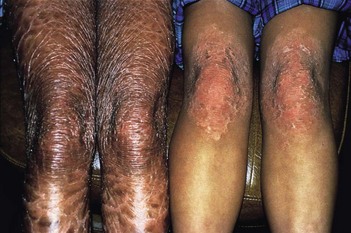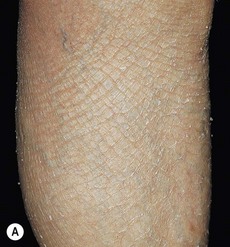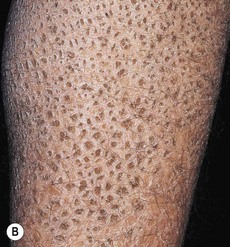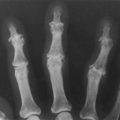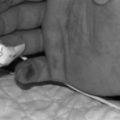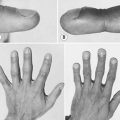155 Ichthyosis
Advanced-level questions
What do you know about ichthyosis?
Inherited ichthyosis
• Inherited ichthyosis is present from birth or childhood and may be apparent only in winter.
• Ichthyosis vulgaris (Fig. 155.2A) is autosomal dominant and present from childhood. It has white, translucent, quadrangular scales on the extensor aspects of the arms and legs, sparing flexural areas, and is associated with atopy.
• X-linked ichthyosis (Fig. 155.2B) is present from birth. It occurs all over the trunk with large, brown, quadrangular scales that may encroach on the antecubital and popliteal fossae; it is associated with corneal opacities. Affected individuals have a deficiency of steroid sulfatase, an enzyme important for the removal of proadhesive cholesterol sulfate secreted into the intercellular spaces. The desquamation process is impaired by the accumulation of cholesterol sulfate, which results in persistent cell-to-cell adhesion within the stratum corneum.
• Lamellar ichthyosis is autosomal recessive and present from birth. It is seen over the body, palms and soles and is associated with ectropion.
• Epidermolytic hyperkeratosis is autosomal dominant and present since birth. There is predominant flexural involvement.

